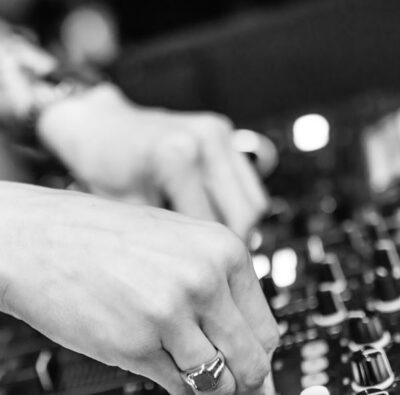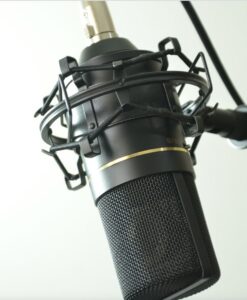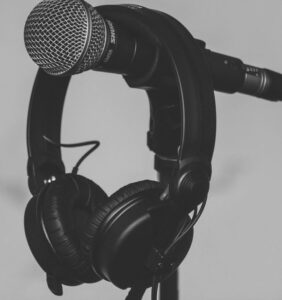Are you tired of listening to low-quality audio that ruins your listening experience? Do you need an answer on how can i get the highest quality audio possible? Look no further! In this article, we will explore various ways to achieve the best audio quality for all your listening needs.
To get the highest quality audio, you should use high-quality microphones to record in a quiet environment, use lossless audio formats such as WAV or FLAC, use a high bitrate, use high-quality audio equipment such as speakers or headphones, and use professional audio editing software and techniques if editing the audio.
It’s worth noting that the human ear has a limited ability to distinguish between high-quality audio and lower-quality audio, so you may not always need to strive for the absolute highest quality audio. In many cases, a balance between audio quality and file size is appropriate.
What is the best audio quality?
The best audio quality is subjective and depends on the specific needs and preferences of the listener. In general, lossless audio formats such as WAV and FLAC are considered to provide the highest quality audio because they do not compress the audio data and provide a faithful representation of the original audio. These formats result in larger file sizes but provide the best quality for critical listening.
Other factors that can affect the audio quality include the bitrate of the audio file, the audio equipment used to play back the audio, the quality of the audio source, and any audio editing that has been done.
It’s worth noting that the human ear has a limited ability to distinguish between high-quality audio and lower-quality audio, so you may not always need to strive for the absolute highest quality audio. In many cases, a balance between audio quality and file size is appropriate.
Importance of having quality audio
Getting high-quality audio is so important and should never be overlooked. There are several reasons why it is important to get high-quality audio:
Improved listening experience: High-quality audio allows you to fully appreciate and enjoy the music, podcast, or movie you are listening to. It can make a big difference in the overall listening experience.
Better representation of the original content: High-quality audio more accurately represents the original content, allowing you to hear all the subtle nuances and details in the audio. This is especially important for classical music, jazz, and other genres that rely on subtlety and nuance.
Better clarity and separation: High-quality audio has better clarity and separation, which means that you can hear individual instruments and voices more clearly. This can make it easier to follow along with complex music or follow a conversation in a podcast.
Greater dynamic range: High-quality audio has a greater dynamic range, which means that it can capture a wider range of volume levels. This allows you to hear both the quiet and loud parts of an audio recording more clearly.
How to improve audio quality
There are several steps you can take to improve the audio quality:
Use high-quality microphones: Using high-quality microphones, such as condenser microphones, can help capture a higher-quality audio signal.
Record in a quiet environment: Recording in a quiet environment, or using a pop filter to reduce background noise, can help improve the audio quality by reducing distractions and noise.
Use a lossless audio format: Using a lossless audio format, such as WAV or FLAC, can help preserve the quality of the audio because these formats do not compress the audio data.
Increase the bitrate: Increasing the bitrate of the audio file can improve the audio quality, but it will also result in a larger file size.
Use audio editing software: Using audio editing software, such as Audacity, can help remove background noise, adjust the volume, and improve the overall audio quality.
Use high-quality audio equipment: Using high-quality audio equipment, such as speakers or headphones, can help improve the overall audio quality.
It’s worth noting that the human ear has a limited ability to distinguish between high-quality audio and lower-quality audio, so you may not always need to strive for the absolute highest quality audio. In many cases, a balance between audio quality and file size is appropriate.
How can I get the highest-quality audio?
High-quality audio is important because it allows you to fully appreciate and enjoy the audio content, and it more accurately represents the original content. Below are several ways to get the highest-quality audio:
Use high-quality audio equipment: Using high-quality audio equipment such as speakers, headphones, and microphones can greatly improve the overall sound quality. Look for equipment that has a high-frequency response and low distortion to get the best results.
Use a lossless audio format: Lossless audio formats such as FLAC, WAV, and AIFF preserve all of the original audio data, resulting in a higher quality sound compared to lossy formats like MP3.
Use a high bitrate: The bitrate of an audio file refers to the amount of data used to encode it. Higher bitrates result in higher quality audio but also result in larger file sizes.
Use a high sample rate: The sample rate of an audio file refers to the number of samples of audio taken per second. Higher sample rates result in higher quality audio but also result in larger file sizes.
Use audio mastering techniques: Audio mastering is the process of refining and enhancing the sound of a recorded track. A skilled audio engineer can use various techniques to optimize the overall sound quality of an audio track.
Use good recording techniques: Pay attention to the position of the microphone and the speaker, and make sure that the speaker is facing the microphone and speaking directly into it. Avoid making sudden movements or handling the microphone too much, as this can cause unwanted noise.
Use a digital audio workstation (DAW) and post-processing software: Use a DAW and post-processing software, such as Adobe Audition or Audacity, to clean up and polish your audio. This can include removing background noise, equalizing the frequency spectrum, and applying compression and other effects to improve the overall sound.
By following these tips, you can achieve the highest quality audio for all your listening needs.
Tips for improving audio quality
There are several ways to improve the audio quality of your recordings:
Use a high-quality microphone: Investing in a good microphone can make a significant difference in the quality of your audio. Look for microphones with a large diaphragm and a directional pickup pattern, such as a cardioid or supercardioid pattern. These microphones are better at capturing sound from a specific direction and rejecting noise from the sides and rear.
Find a quiet location: Noise from traffic, people, or other sources can be picked up by the microphone and ruin your recording. Try to find a location that is as quiet as possible to minimize background noise.
Use a pop filter: A pop filter is a device that attaches to your microphone and helps to reduce the “popping” sound that can occur when you speak certain consonants, such as “p” or “b.” Pop filters can improve the clarity of your audio by reducing these types of distractions.
Use a shock mount: A shock mount is a device that helps to isolate the microphone from vibrations and handling noise. This can be especially useful if you are recording while moving around or if you are using a handheld microphone.
Use a digital audio workstation (DAW) to edit your recording: A DAW is a software program that allows you to edit and manipulate audio files. You can use a DAW to remove background noise, equalize the audio, and make other adjustments to improve the overall quality of your recording.
Experiment with microphone placement: The position of the microphone can have a big impact on the quality of your audio. Try moving the microphone closer to or farther from your mouth or experimenting with different angles to find the best sound.
Use a headset or headphones: If you are recording audio for a podcast or video call, using a headset or headphones can help to reduce echo and improve the overall quality of your audio.
By following these tips, you should be able to significantly improve the audio quality of your recordings.
How to optimize audio settings for the best quality
Here are some tips for optimizing audio settings for the best quality:
Set the sample rate and bit depth appropriately:
The sample rate determines the number of times per second that the audio is sampled, and the bit depth determines the number of bits used to represent each sample. Higher values for both of these settings will result in higher-quality audio, but they will also increase the size of the audio file. A sample rate of 44.1kHz and a bit depth of 16 bits are commonly used for CD-quality audio.
Use a high-quality codec:
A codec is a software program that is used to encode and decode audio files. Some codecs are more efficient than others and can produce higher-quality audio with a smaller file size. Some popular codecs include MP3, AAC, and FLAC.
Use a high-quality microphone:
As mentioned earlier, using a high-quality microphone is crucial for producing good-quality audio.
Use a noise reduction or noise cancellation feature:
Many audio editing software programs have a noise reduction or noise cancellation feature that can help to reduce background noise in your audio.
Use an equalization (EQ) feature:
An EQ feature allows you to adjust the balance of frequencies in your audio. This can be useful for correcting imbalances or enhancing certain aspects of the audio.
Use a compressor:
A compressor is a tool that helps to even out the levels of your audio. It can reduce the volume of loud sounds and increase the volume of quiet sounds, which can help to create a more balanced and consistent audio experience.
By following these tips and experimenting with different settings, you should be able to optimize your audio settings for the best quality.
How to enhance audio quality on headphones
Here are some tips for enhancing audio quality on headphones:
Use high-quality headphones: Investing in a good pair of headphones can make a significant difference in the quality of your audio. Look for headphones with a wide frequency response, low distortion, and a comfortable fit.
Use a high-quality audio source: The quality of the audio you are listening to will also have a big impact on the overall listening experience. Use a high-quality audio file or streaming service to get the best sound quality.
Use a headphone amplifier: A headphone amplifier is a device that amplifies the audio signal to drive the headphones. This can help to improve the overall clarity and detail of the audio.
Use a digital audio workstation (DAW) to equalize the audio: A DAW is a software program that allows you to edit and manipulate audio files. You can use a DAW to adjust the equalization (EQ) of the audio to enhance certain frequencies and create a more balanced sound.
Experiment with different audio settings: Many headphones have settings that allow you to adjust the bass, treble, and other aspects of the audio. Experiment with these settings to find the best sound for your preferences.
How to enhance audio quality on speakers
There are several ways to enhance the audio quality of speakers:
Use high-quality speakers: Investing in good quality speakers can make a big difference in the overall sound quality. Look for speakers with a wide frequency range, low distortion, and high sensitivity.
Adjust the equalizer settings: Most speakers have an equalizer or EQ that allows you to adjust the levels of different frequency ranges. Experiment with different EQ settings to find the one that sounds best to you.
Use a dedicated amplifier: Using a dedicated amplifier can improve the sound quality of your speakers by providing a clean and powerful signal.
Use high-quality audio cables: Using high-quality audio cables can help to reduce signal loss and improve the overall sound quality.
Use a high-quality audio source: The quality of the audio source can also affect the overall sound quality. Use high-quality audio files or a digital-to-analog converter (DAC) to ensure that you are getting the best possible sound from your speakers.
Experiment with placement: The position of your speakers can also affect the sound quality. Experiment with different placements to find the one that sounds best to you.
Use acoustic treatment: Adding acoustic treatment to your room can help to reduce reflections and improve the overall sound quality.
How to improve audio quality on a phone
There are several ways to improve the audio quality on the phone:
Use high-quality headphones or speakers: Investing in good quality headphones or speakers can make a big difference in the overall sound quality. Look for headphones or speakers with a wide frequency range, low distortion, and high sensitivity.
Adjust the equalizer settings: Most phones have an equalizer or EQ that allows you to adjust the levels of different frequency ranges. Experiment with different EQ settings to find the one that sounds best to you.
Use a high-quality audio source: The quality of the audio source can also affect the overall sound quality. Use high-quality audio files or a digital-to-analog converter (DAC) to ensure that you are getting the best possible sound from your phone.
Use a dedicated amplifier: Using a dedicated amplifier can improve the sound quality of your phone by providing a clean and powerful signal.
Use high-quality audio cables: Using high-quality audio cables can help to reduce signal loss and improve the overall sound quality.
Use a phone with a high-quality DAC: Some phones have a built-in DAC that converts digital audio signals into analog signals. A high-quality DAC can improve the overall sound quality of your phone.
How to improve audio quality on a laptop
There are several ways to improve the audio quality on a laptop:
Use high-quality headphones or speakers: Investing in good quality headphones or speakers can make a big difference in the overall sound quality. Look for headphones or speakers with a wide frequency range, low distortion, and high sensitivity.
Adjust the equalizer settings: Most laptops have an equalizer or EQ that allows you to adjust the levels of different frequency ranges. Experiment with different EQ settings to find the one that sounds best to you.
Use a high-quality audio source: The quality of the audio source can also affect the overall sound quality. Use high-quality audio files or a digital-to-analog converter (DAC) to ensure that you are getting the best possible sound from your laptop.
Use a dedicated amplifier: Using a dedicated amplifier can improve the sound quality of your laptop by providing a clean and powerful signal.
Use high-quality audio cables: Using high-quality audio cables can help to reduce signal loss and improve the overall sound quality.
Use a laptop with a high-quality DAC: Some laptops have a built-in DAC that converts digital audio signals into analog signals. A high-quality DAC can improve the overall sound quality of your laptop.
How to improve audio quality on a gaming headset
There are several ways you can try to improve the audio quality of your gaming headset:
- Make sure your headset is properly plugged in and seated correctly in the audio port.
- Adjust the volume levels on your computer or gaming console to ensure that the audio is not too loud or too quiet.
- Check for any software updates for your headset or audio drivers on your computer.
- Experiment with different equalizer settings to see if you can find a sound profile that works better for you.
- If you are using a wired headset, try using a different audio cable to see if that makes a difference.
- Consider purchasing a higher-quality headset. Higher-end headsets often come with better audio drivers and more advanced features that can improve sound quality.
- If you are using a wireless headset, make sure the battery is fully charged and that the headset is within range of the wireless transmitter.
Consider using an external audio interface or digital-to-analog converter (DAC) to improve the audio quality of your headset. These devices can help to improve the overall clarity and detail of the audio signal.
Conclusion
There are several steps you can take to try and get the highest quality audio. These include making sure your audio equipment is properly plugged in and set up, adjusting volume levels, checking for software updates, experimenting with different equalizer settings, and using higher-quality audio equipment.
You may also want to consider using an external audio interface or digital-to-analog converter (DAC) to improve the overall clarity and detail of the audio signal. By following these tips, you can help to ensure that you are getting the best possible audio quality for your listening experience, and this answers the question of how can I get the highest quality audio.




